New Survey Finds Teens Happier, More Motivated
American teenagers are speaking up.
Whether the subject is climate, mental health, social media, or their own education – teenagers want to be part of the discussion.
K-12 education in our country is no exception, and, unsurprisingly, teenagers have not been shy about sharing their experiences and perspectives. Since August 2020, EdChoice, in partnership with Morning Consult, has been surveying a nationally representative sample of American Teens, ages 13-18 (N=1,000).
Writing about last year’s teens survey, I said we needed to be sponges, to listen and absorb as much as we can from the unique perspective of teenagers. In this sixth installment of the survey, teens shared their opinions on everything from their mental health, post-graduation plans, and needs from their schools. Here’s what we learned:
1. Teens’ lives have improved in many areas since pandemic times. Teens report feeling much better currently about their health (mental and physical), happiness, motivation, and relationships with friends. Teens’ responses also indicate improvement in their stress and anxiety levels, albeit less significantly. Looking back on data from a year ago, teens have showed the most improvement in their relationships with friends (21-point increase), motivation (16-point increase), and physical health (15-point increase).
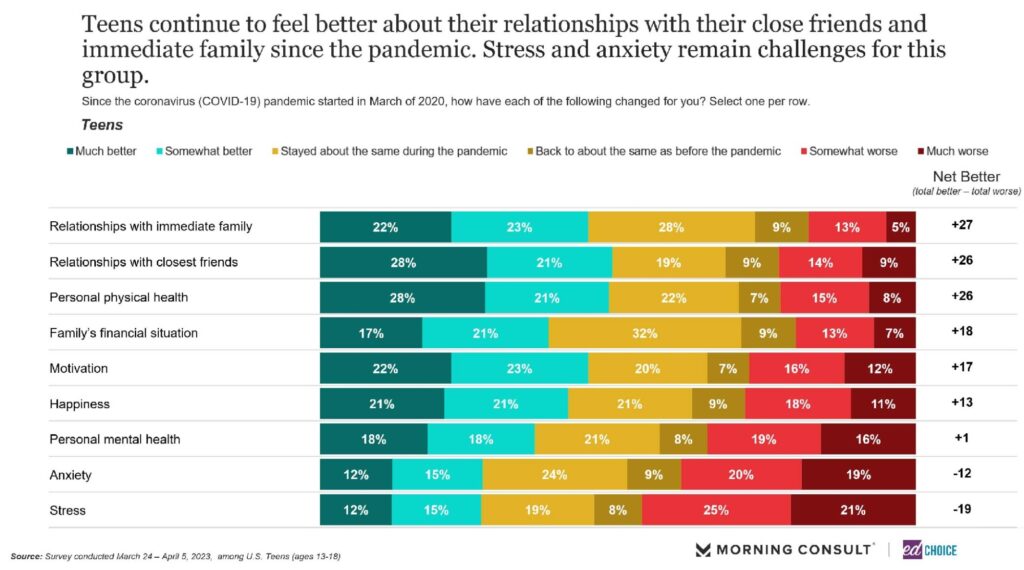
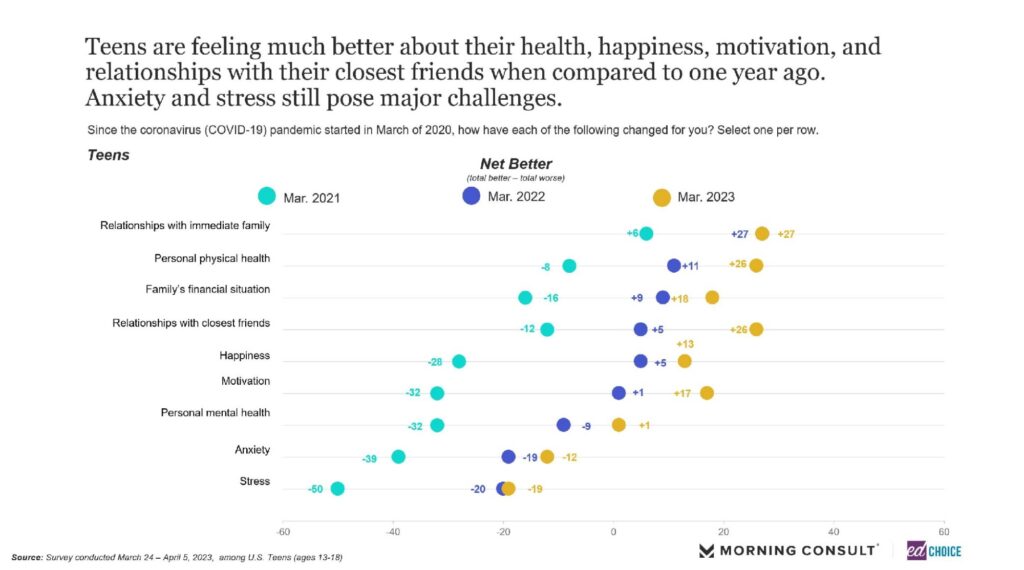
Specifically, Black teens, Hispanic teens, teens from urban areas, and males are most likely to report feeling better. The difference between males and females has been one of the bigger storylines since this question was first posed to teens. While males are still feeling much better overall, females experienced a big jump in wellness (8-point increase) compared to males since September 2022. Teens in 11th or 12th grade also reported feeling much better (10-point increase) since last fall, bringing their overall wellness nearly equal to teens in eighth or ninth grade.
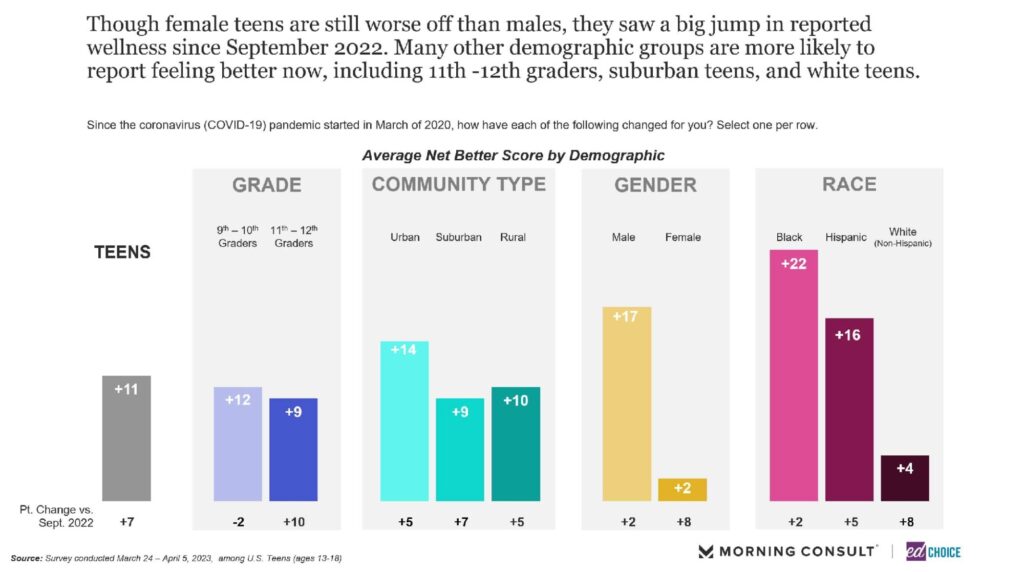
2. Almost one in three teens say they are thriving to some degree. Continuing the discussion on how teens are feeling, we posed this question to teens: How do you generally feel about your life on a scale from 0 to 10, where 0 means you feel like you are suffering to a high degree and 10 means you are thriving to a high degree. Overall, 30 percent of teens said they are thriving, while 9 percent said they are suffering. More specifically, 39 percent of males said they are thriving, compared to only 22 percent of females. Examining the data by community type, teens from rural areas (24%) were much less likely to say they are thriving compared to teens from suburban areas (33%) or teens from urban areas (32%). LGBTQ teens were more likely to say they are suffering (14%) than to say they are thriving (12%).
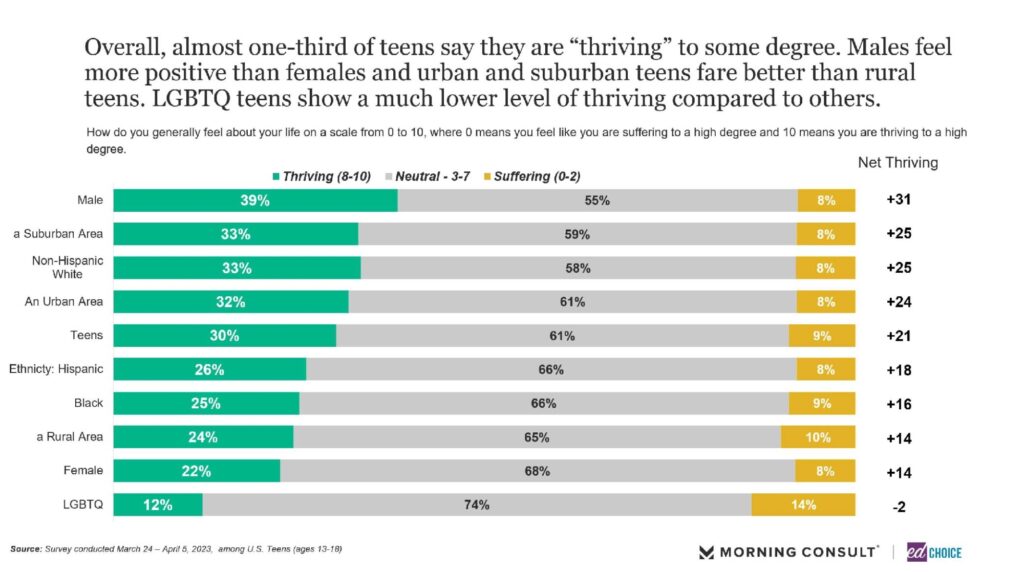
3. More than two in five teens have heard about ChatGPT. The majority of teens have not used the technology, though. Among teens that have used the device, 15 percent said they use ChatGPT in their free time, only 5 percent said they use ChatGPT at school, and another 8 percent said they use the technology both in their free time and at school. The groups most familiar with ChatGPT are Asian teens (65%), males (61%), and 18-year-olds (45%).
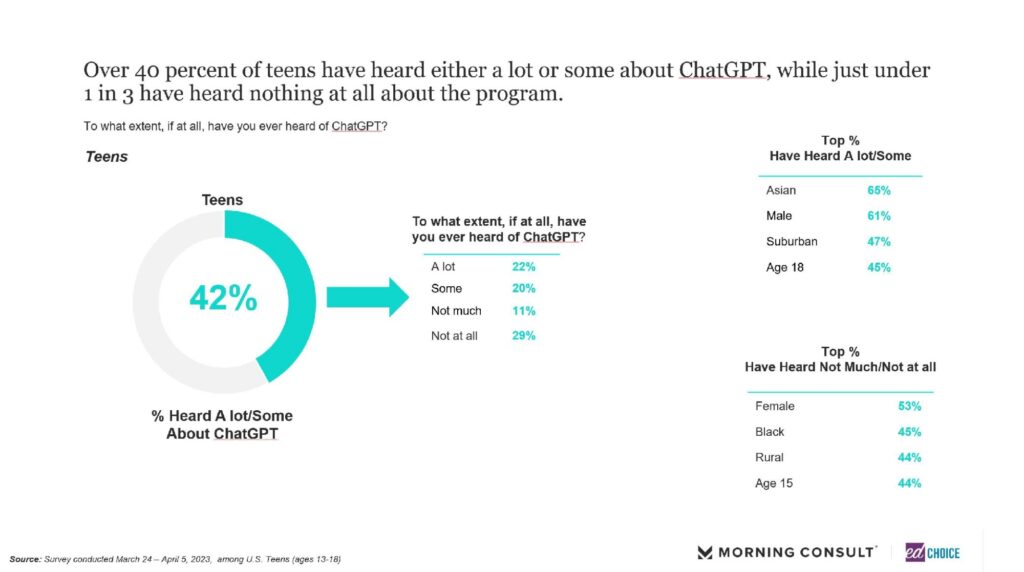
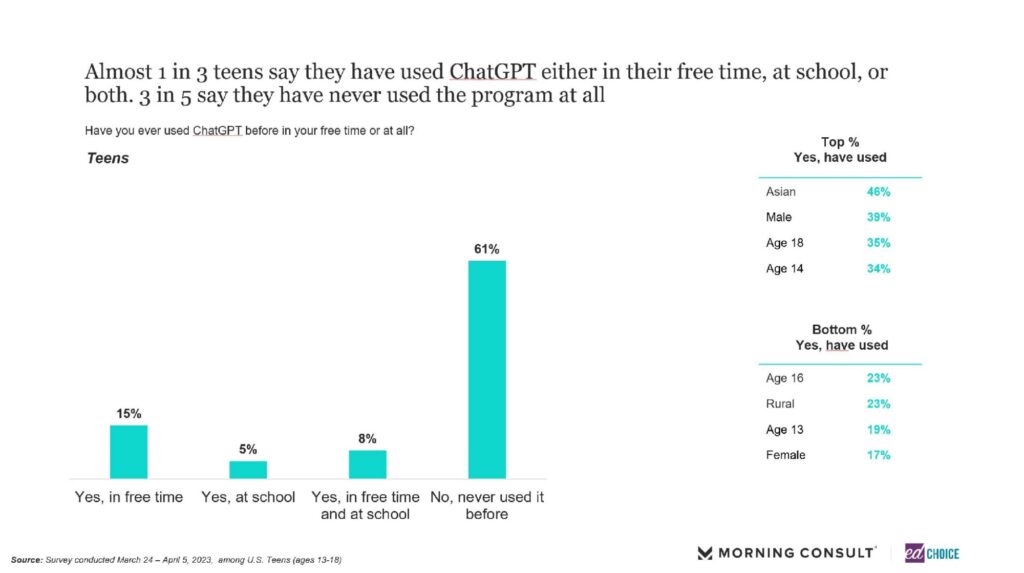
4. Teens feel more supported when it comes to their future and their academics, but less so when it comes to mental health. We asked teens about the support they receive from their school, parents, teachers, and friends when it comes to their future, academics, and mental health. Thinking about their future, roughly 7 in 10 teens feel supported by their parents (73%) and friends (69%). Academically, teens feel most supported by their parents (68%) and teachers (65%). When looking for support for mental health, teens rely on their friends (65%) and parents (57%). Interestingly, only one-third of teens feel supported by their school when thinking about their mental health. A pattern emerged – teens feel the least support from their school when it comes to their future (48%), academics (56%), and mental health (34%).
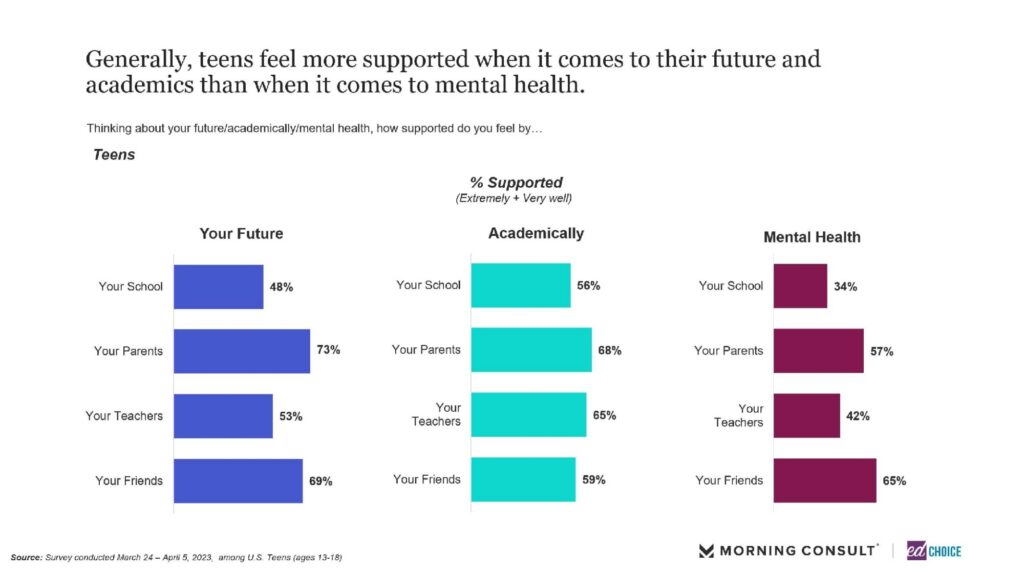
The demographic breakdown provides more context. Thinking about how their school supports their future, less than half of Hispanic teens feel supported. Looking at academic support, LGBTQ teens and Hispanic teens feel least supported by their school. Lastly, examining school support for mental health, only 21 percent of LGBTQ teens feel their school is supportive.
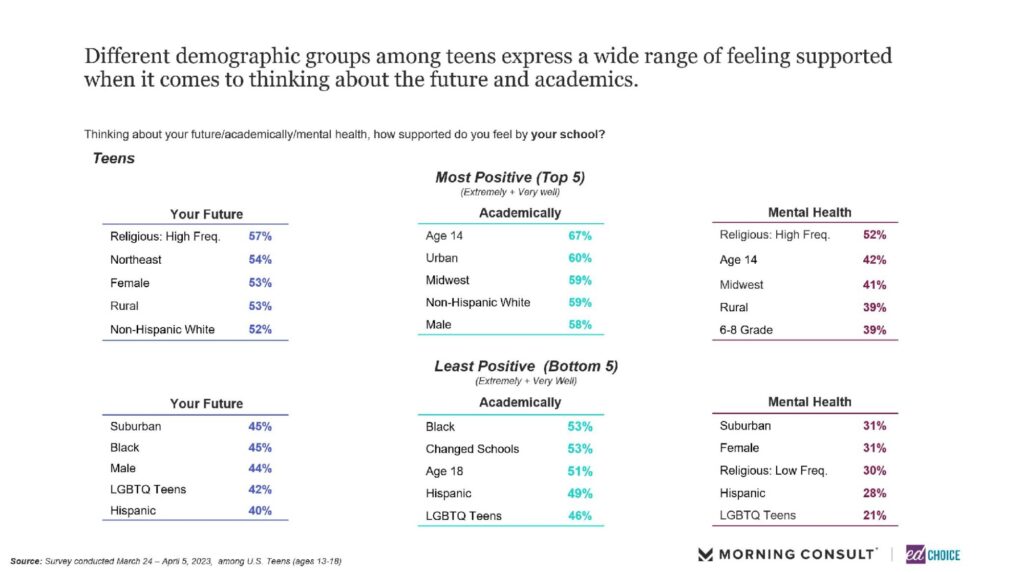
5. Less than one in three teens feel their school is handling mental health effectively. We asked teens how they feel their school is handling issues like mental health, guns, bullying, and violent behaviors. Less than half of teens feel their school is doing a good job with all of the categories mentioned. Teens are most positive about their school’s handling of guns (40%), while roughly one-third of teens feel positive about their school handling violent behaviors (36%), bullying (32%), and mental health (31%). Across the board, parents are more optimistic than teens. In January, about half of parents signaled confidence about their child’s school’s ability to handle such issues.
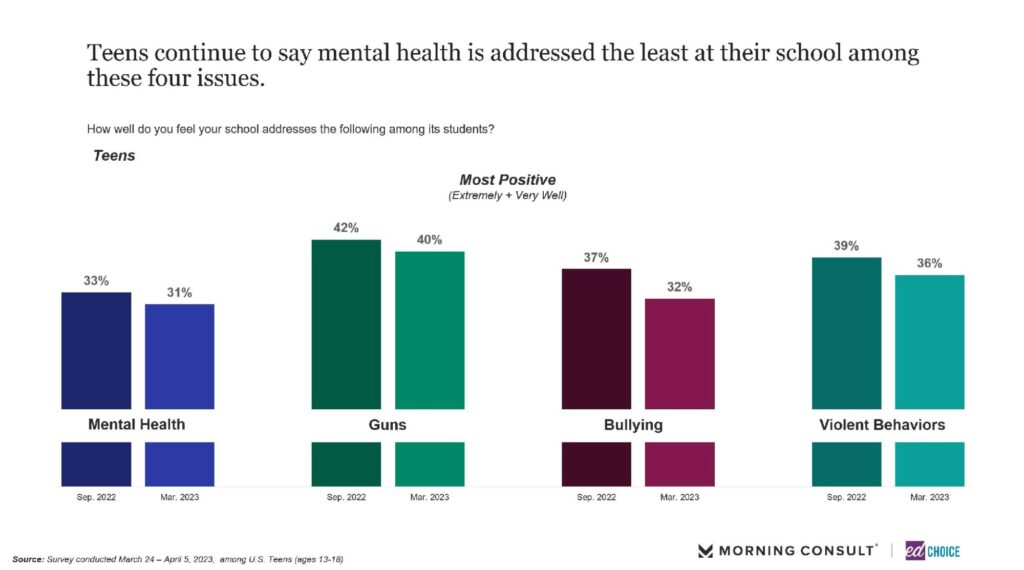
6. Only about one in four teens are concerned about the possibility of a violent intruder entering their school. Parents, in contrast, signal much higher levels of concern. More than half of parents are concerned about this possibility, nearly doubling the concern level of teens. Teens are slightly less concerned now compared to last fall, dipping from 32 percent to 28 percent.
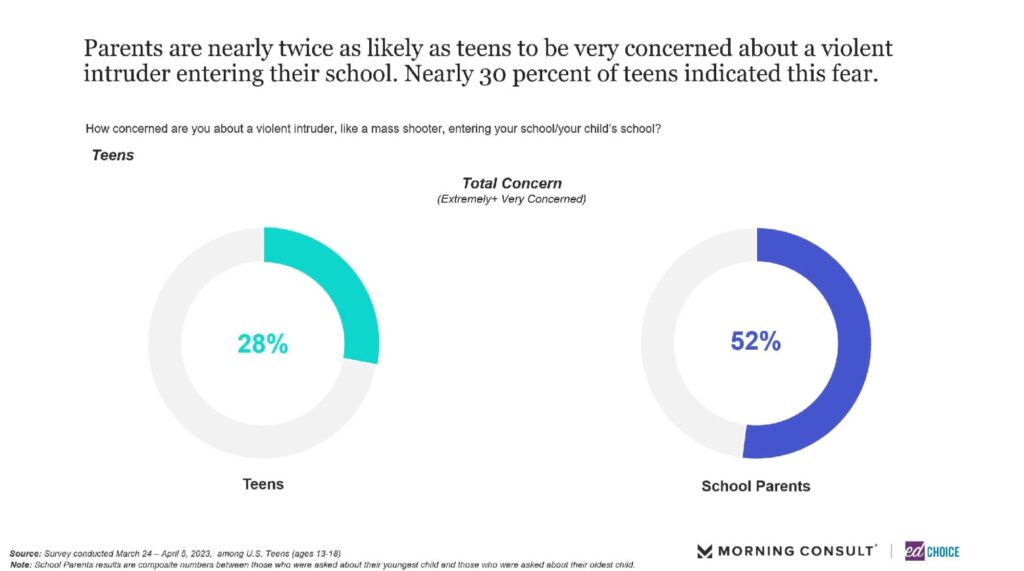
7. Roughly half of teens feel positively about their future. More than half of teens describe their feelings as happy (55%) and having a sense of purpose (52%), while around one in ten teens say they feel unhappy (9%) and without purpose (14%). Perhaps notably, the most shared feeling among teens was hope. Slightly less than three in five teens said they feel hopeful about their future. The feeling of being in control of their future is where teens are most split. Only 41 percent of teens say they feel in control of their future, compared to 27 percent of teens who feel overwhelmed thinking about the future.
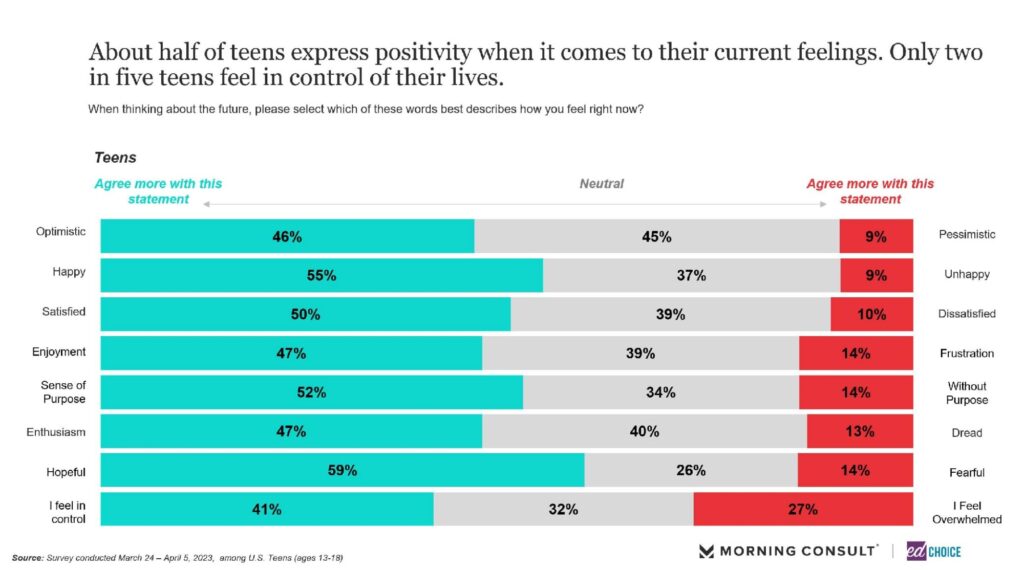
8. Nearly one in four teens either have no specific post-high school plans or do not know what they will do. At the same time, the proportion of teens who are unsure of their plans after high school decreased slightly from the fall of 2022 (27% to 24%). More than half of teens (54%) plan to enroll in a four-year university, with the majority of these teens planning to enroll in an in-state college (35%) rather than venture out of state (19%). Compared to the fall of 2022, teens are much more likely to say they are planning to enroll in a four-year college after high school.
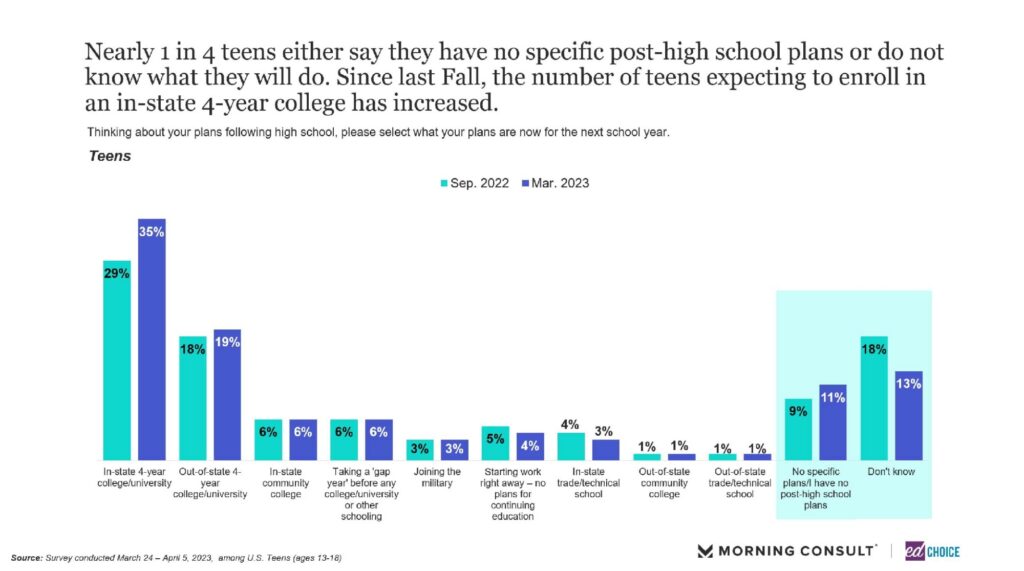
We also asked teens how prepared they feel for their plans after high school. Overall, only 1 in 3 teens feel prepared for their plans after high school. Teens planning to attend community college feel the most prepared (39%), while teens planning to enroll in a four-year college feel less confident (30%). Narrowing it down further, teens in 11th or 12th grade who plan to enroll in a four-year college out of state feel the least prepared for their life after high school (27%).
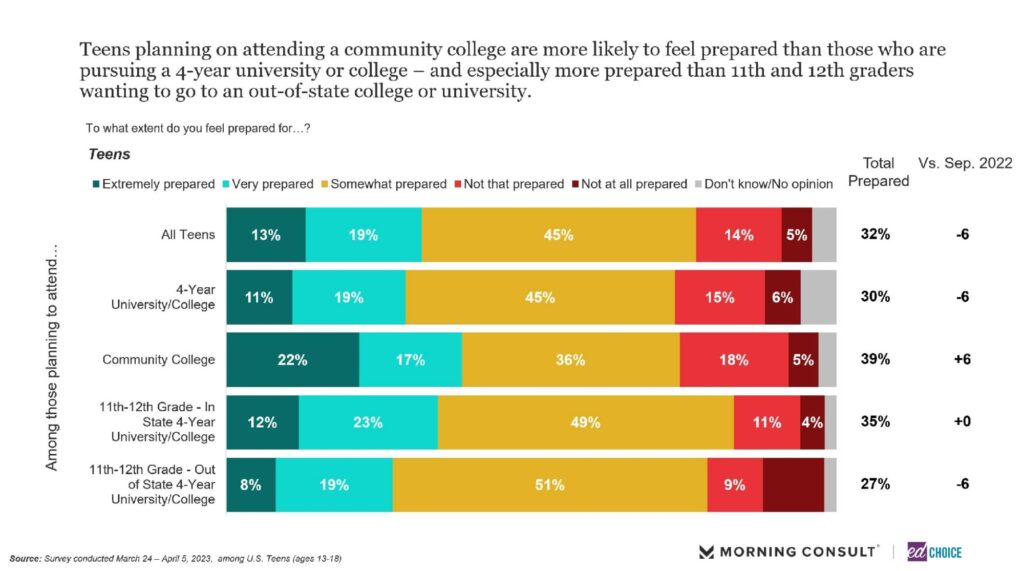
9. One in three teens say they have switched schools in the last three years. We asked teens: Other than moving from junior high/middle school to high school, have you changed schools in the last three years? We observed a similar figure last fall, as well. The majority of teens that have switched schools only did so once, while nearly 2 in 5 teens report switching schools multiple times.
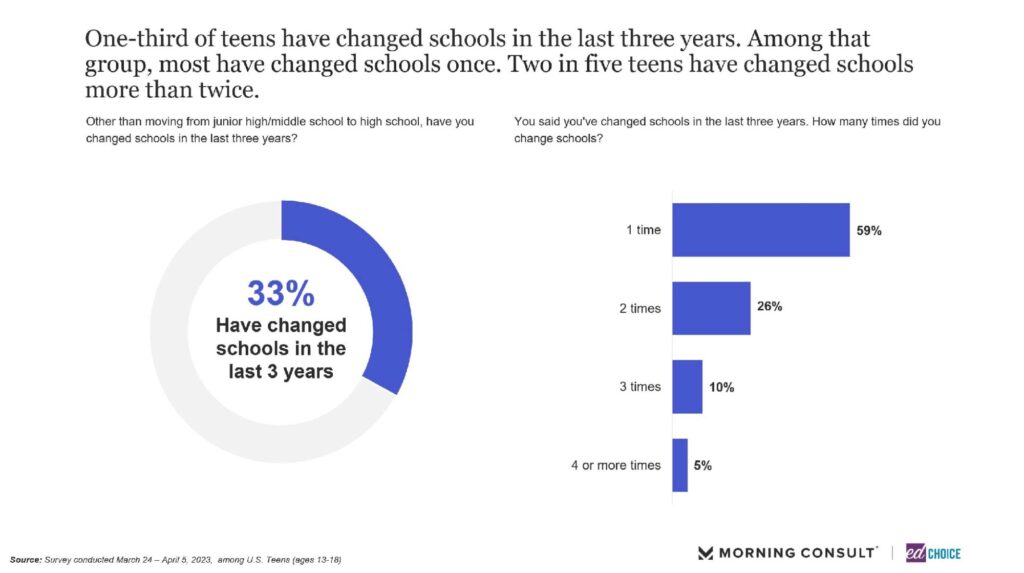
10. Teens cite skills for future employment as the most important thing to learn at school. The majority of teens (58%) believe that skills for future employment are extremely important to learn at school. Interestingly, core academic subjects and fixing social problems are the least important items for teens. A contradiction appears when looking at how parents answered the same question. The majority of parents (55%) believe that the main purpose of education for high school students is to learn core academic subjects. In contrast, only 38 percent of teenagers believe it is extremely important to learn core academic subjects. Parents and teenagers agree that skills for future employment are the most important thing to learn at school.
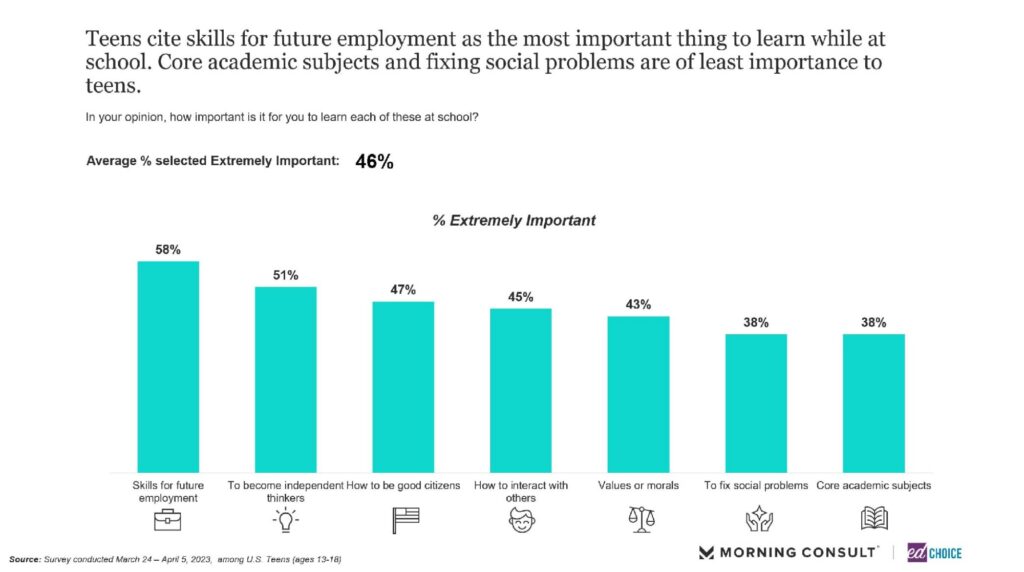
Visit the EdChoice Public Opinion Tracker site to access past reports, crosstabs, questionnaires, and our national and state dashboards. All are updated monthly. We also provide a more in-depth description of our research and survey methods.
Our K–12 education polls archive is updated on a rolling basis, roughly a few times each month. Please don’t hesitate to let us know if we are missing any surveys, or if there are accidental errors.




